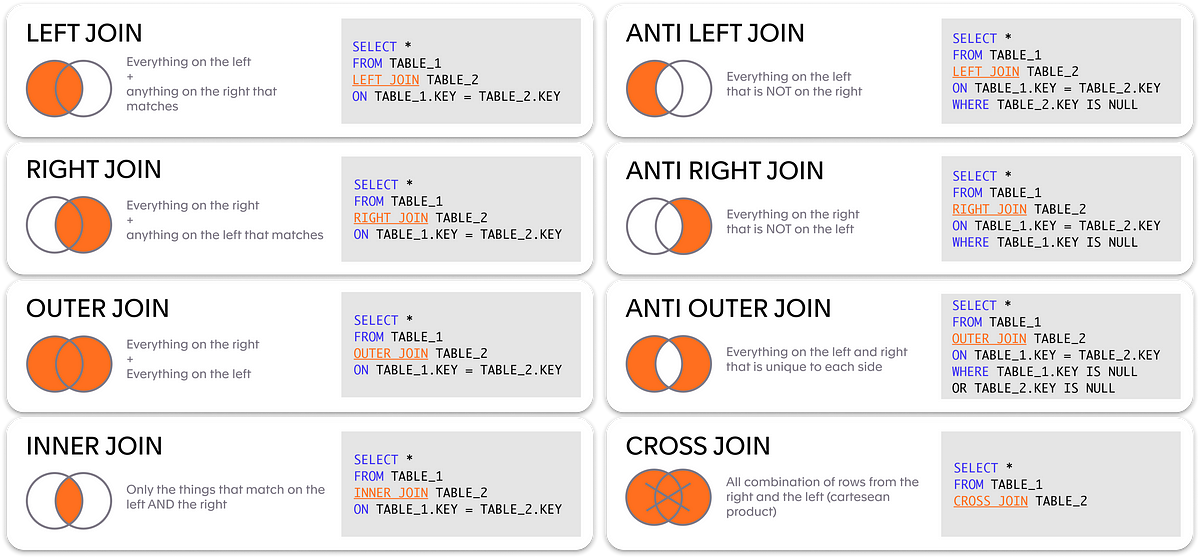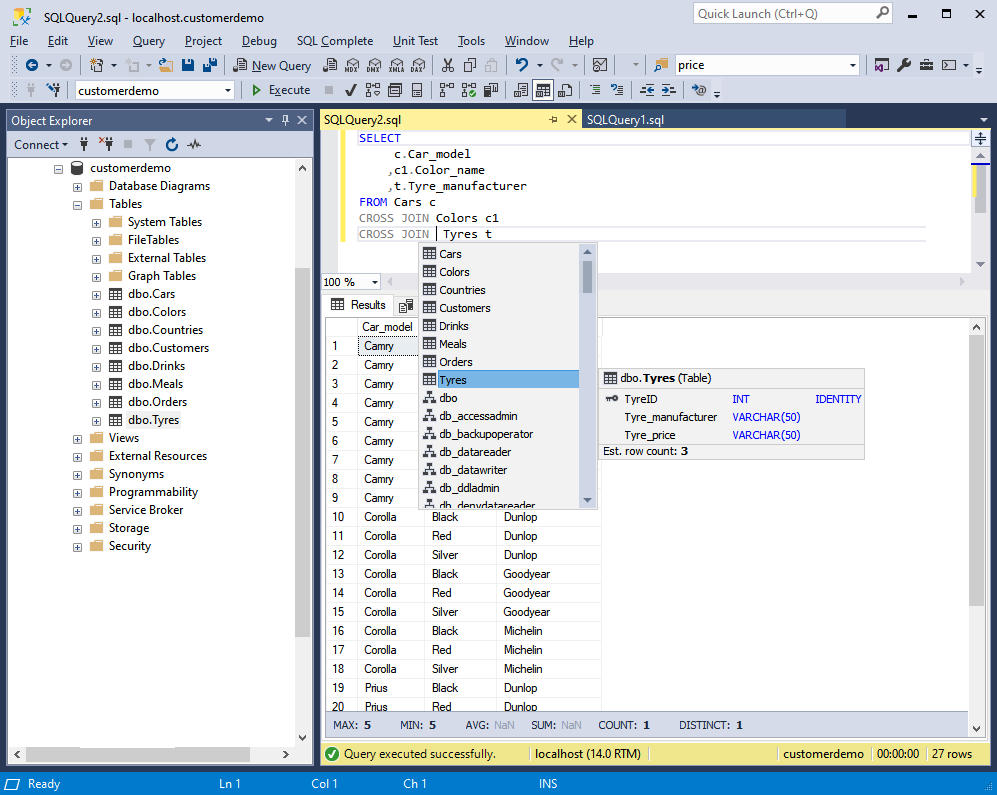A CROSS JOIN produces a cartesian product between the two tables, returning all possible combinations of all rows. It has no ON clause because you're just joining everything to everything. A FULL OUTER JOIN is a combination of a LEFT OUTER and RIGHT OUTER JOIN .What is a CROSS JOIN in SQL In SQL, CROSS JOINs are used to combine each row of one table with each row of another table, and return the Cartesian product of the sets of rows from the tables that are joined.To make the computation faster, reduce the number of partitions of the input DataFrames before the cross join, so that the resulting cross joined DataFrame doesn't have too many partitions.
Why is a cross join not so useful : The cross join is considered a very expensive statement in terms of data usage because it returns the product of the table being joined. If the first table contains 100 rows and the second has 1000 rows, the resulting cross join query will return 100 x 1000 rows, which is 100,000 rows.
Is cross join better than inner join
example if table1 contains 2 records and table2 contains 3 records then result of the query is 2*3 = 6 records. So dont go for cross join until you need that. The inner join will give the result of matched records between two tables where as the cross join gives you the possible combinations between two tables.
What is the disadvantage of cross join : Disadvantages of Cross Join in SQL Server
MS SQL Cross join is generally not preferred as it takes a lot of time to generate all combinations and produces a considerable result set that is not often useful.
As tables get large, nested loop and hash joins can become costly. Large datasets quickly use up RAM and force the query planner to perform many expensive I/O operations to move data in and out of memory.
Inner joins in ClickHouse can be expensive due to data distribution, synchronization overhead, and memory consumption.
What is the biggest risk of using cross join
If the first table contains 100 rows and the second has 1000 rows, the resulting cross join query will return 100 x 1000 rows, which is 100,000 rows. The SQL Server document states that “this is potentially an expensive and dangerous operation since it can lead to a large data explosion.When Should I Use Cross-Join Use a cross join when you want to generate all possible combinations of rows from two tables, regardless of any specific condition or relationship. It's suitable for scenarios where you need a complete pairing of every row from one table with every row from another.



